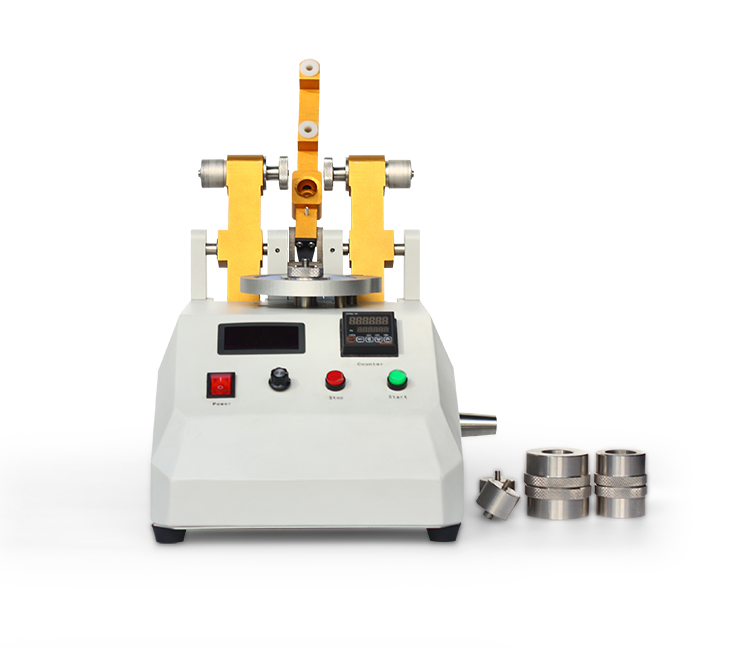
NewsInformation Center
What is the ISO standard for Taber abrasion?
2023/10/25
Taber wear test is a common method to measure resistance of various materials to wear and tear. This test evaluates the wear resistance of the surface by imitating the wear conditions that may be encountered in the actual use of the material, such as cleaning, scrubbing, transportation, conventional use or wear.
For Taber wear tests, a dedicated device is often used – Taber Abrasion Resistance Tester. The equipment consists mainly of a turntable, two wear wheels that can load sandpaper or other wear media and a device that can impose loads on the test samples. In the test, the sample is fixed on the turntable, which then rotates at a fixed speed, while two wear wheels wear the sample in the event of a specific load.
ISO has developed several standards related to Taber wear and tear. These standards cover how to use Taber Abrasion Resistance Tester for different types of wear tests, and how to interpret and report test results. Each standard details the required equipment configuration, load value, speed, test time and type of wear wheel used to load.
Here are two examples of ISO standards associated with Taber wear:
1. ISO 5470-1:2016:
This is the standard for the general Taber wear test. This standard describes how to perform rotation wear tests, how to determine wear indexes (a parameter that represents the wear resistance of the material), and how to compare results under different test conditions. This standard applies to most paved materials and coatings, including plastics, coatings and rubber.
ISO 9352:2013:
This standard is specifically suitable for Taber wear tests for plastic. It is similar to the ISO 5470-1:2016 standard, but also includes guidelines on how to specify and prepare plastic samples, and how to calibrate and maintain Taber Abrasion Resistance Tester.
These standards are applicable to quality control testing, such as determining consistency of batch materials, as well as in the R&D phase, such as enhanced wear resistance of materials by modifying formulations or manufacturing processes. However, any Taber wear test results must be carefully interpreted, because the wear conditions that may be encountered in practical applications are varied, so the results in laboratory conditions may not necessarily accurately reflect the properties of the material in all environments.
In addition, ISO will also develop and manage these standards in conjunction with various relevant industry and regional standardization organizations. For example, organizations such as the European Organization for Standardization (EN) and the American Association of Materials and Tests (ASTM) also have their own Taber Test Standards. The same objective is to set up testing methods and processes that can be widely accepted and accepted.
Overall, these ISO standards provide a globally recognized framework for how to conduct Taber wear tests, how to collect and interpret data, and how to compare and share results. By following these standards, the repeatability and consistency of wear tests can be ensured, which is critical in assessing and comparing material performance.
Previous: What is ASTM D 638 standard test method for tensile properties of plastics?
N e x t : Popular: 2024 Asian Home Textiles and Home Decoration Exhibition (HD Asia)




